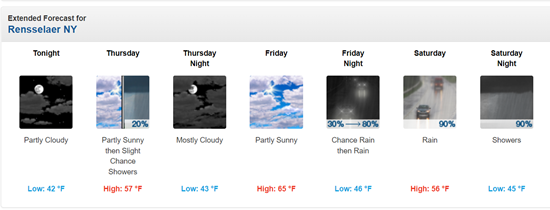Amphibian Migrations - March 7 Report, Upcoming Weather, and News!
The New York State Department of Environmental Conservation sent this bulletin on 03/16/2022 06:11 PM EDT |
| DEC Delivers - Information to keep you connected and informed from the NYS Department of Environmental Conservation |
| Share or view as a web page || Update preferences or unsubscribe |
Amphibian Migrations and Road CrossingsA Project of the NYSDEC Hudson River Estuary Program and Cornell University |
In this issue
March 7 Migration ReportMarch 7 marked a more significant start to migration than what we saw on the very early date of February 22 – for both volunteers and amphibians! So far, we’ve received data from 61 volunteers who documented 11 species and counted 1,702 amphibians last Monday evening (see breakdown below). As a true testament to the geographic range of the estuary watershed, volunteers reported precipitation categories from “no rain” to “downpour” and a temperature range of 30 degrees Fahrenheit. The average air temperature reported was 52F. The primary movers were wood frogs and spring peepers, but some early salamanders were observed, as well. Spotted salamanders were recorded in highest numbers in Ulster County, but a few were also documented as far south as Putnam and as far north as Rensselaer. Thank you volunteers! You assisted 1,093 live salamanders, frogs, and toads safely across roads on their journeys to vernal pools.
Interesting note! During the March 7 migration, my group in New Paltz and another in Shawangunk (both in Ulster County) each found a detached tail from a four-toed salamander, still moving! The ability of four-toed salamanders to drop their tails when threatened is an incredible adaptation to distract predators. When the predator investigates the twitching tail, the four-toed salamander can freeze or walk away, unharmed. While it's a disturbing site to see, these delicate salamanders can regrow their tails. This superhero-like ability of salamanders to regenerate body parts is being studied by scientists to learn how it might apply to human health care. Nature is amazing! Photo above: Four-toed salamander by L. Heady. Note the constriction at the base of the tail. Upcoming Migration ConditionsCurrent conditions and forecasts suggest that the entire Hudson Valley is warming up and thawing. We’ve been keeping any eye on tomorrow night’s forecast, which at this point has a low-to-medium likelihood for migration, with geographic variability and a shorter, earlier rainfall. However, the chance for prolonged rain on Saturday day and night has remained pretty consistent, and that’s looking very good for migration. Here’s the National Weather Service forecast for the northern end of the watershed; as you can see, we have warm days leading up to a 90% chance of rain on Saturday and continued showers into Saturday night.
Of course, all of this can change! Keep track of your local conditions and hourly forecasts this week; if it will be warmer than 40F after sunset and rainy (or still very wet from recent rain), it's worth checking for migration. Data Entry Reminders to VolunteersEmma and I can’t thank AM&RC volunteers enough for entering data into Survey123 soon after migration nights. (And we know many of you rock stars had power outages on March 7!) A few reminders:
Spotlight on Hudson Valley Amphibians!
Photo above: Photographer Joanna Lentini with a Jefferson-blue spotted salamander complex during 2021 migration. By L. Heady As we can all agree, the appeal of amphibians is strong! I’m happy to share that the April issue of Smithsonian Magazine will include a feature on amphibian migrations with beautiful and intriguing images by award-winning photographer, Joanna Lentini. A resident of the Hudson Valley, Joanna joined me on a migration night last year and we also visited vernal pools on a warm and sunny Spring day. Be on the watch for the magazine and enjoy other photographs by Joanna on her website, including a day in the field with DEC bear biologists and her amazing underwater images, one of which was honored with the Grand Prize in Audubon’s Photography Awards in 2020. Thank you, Joanna, for focusing your curiosity and camera on Hudson Valley biodiversity! Our region’s amphibian migrations also made news this week on The Capitol Pressroom. The recorded radio interview is available here. Subscribe for AM&RC BulletinsDid someone forward this email to you? If you'd like to subscribe to receive AM&RC news and migration updates yourself, click here to sign up. Thank you everyone! Vest up and please stay safe! Laura Heady Check out our website! Conservation Planning in the Hudson River Estuary Watershed |

 Species (live#/dead #)
Species (live#/dead #) 
